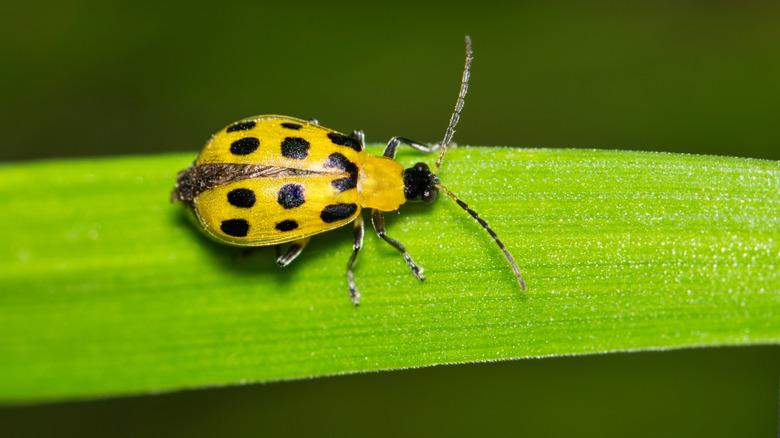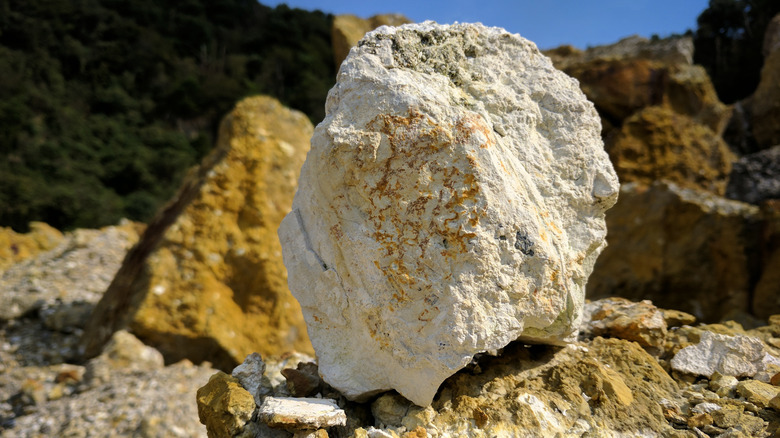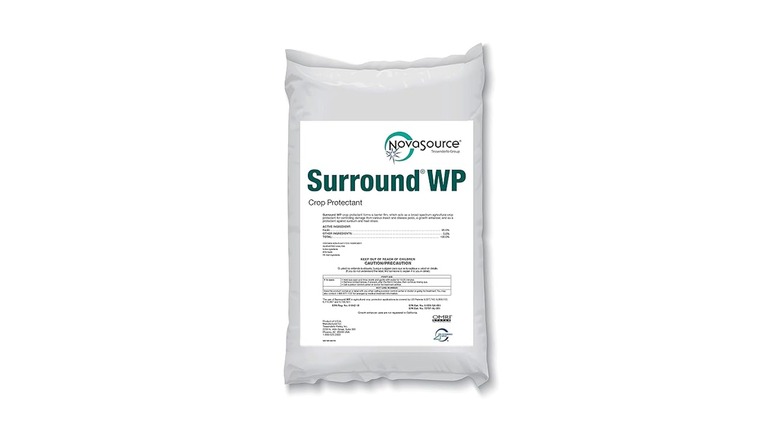The Non-Toxic Way To Get Rid Of Cucumber Beetles While Protecting Your Plants
We may receive a commission on purchases made from links.
When it comes to the delicious flavor and nutritional value of fresh produce, humans aren't the only species chomping at the bit for a bite. For every edible plant, there is a pesky creature that also wants to feed on its favorite meal. For cucumber, gourd, and melon plants, that pest is the cucumber beetle. These insects come in two varieties: striped (Acalymma vittatum) and spotted (Diabrotica undecimpunctata). Both types feed on cucumbers (and other vined fruits and vegetables). Thankfully, both can be deterred with non-toxic kaolin clay.
Not only does the threat to your garden come from two varieties of cucumber beetles, it is also twofold when it comes to the life stages of these pests. In its larva stage, the cucumber beetle eats plants' roots and stems. Once they reach adulthood, the beetles begin to consume leaves, fruit, flower petals, and even pollen. As if this direct destruction wasn't potentially harmful enough, these bugs can also cause indirect damage by spreading fatal bacterial and viral infections to your plants. Consider this your guide to keeping cucumber beetles out of your garden without resorting to toxic chemicals.
Kaolin clay: unsung non-toxic cucumber hero
If you're new to natural insecticides, you may not be familiar with kaolin clay. As a naturally occurring clay mineral found in soil containing chemically-weathered rock kaolinite deposits, kaolin clay is somewhat similar in origin to better-known natural insecticide, diatomaceous earth (silica extracted from the tiny skeletal remains found in the sediment at the bottom of bodies of water). Both of these substances are naturally occurring in different parts of the earth and can be used effectively as insecticides. The ways in which they work to protect plants from insects, however, are not quite the same.
Rather than attacking insects' exoskeletons with its abrasive particles, causing them to dry out and die the way diatomaceous earth does (by the way, you may want to rethink using diatomaceous earth in your garden if you wish to attract pollinators) kaolin clay primarily acts as a protective barrier for your plants. Once a plant has been coated with a solution containing purified 1.4-micron kaolin clay particles, it will be protected from pests, diseases, and even sunburn or heat stress by the filmy barrier that forms as it dries. If a cucumber beetle does manage to feed on a plant coated with kaolin clay, it will become coated and unable to breathe, so it isn't necessarily better for those who are intensely sympathetic to the bugs they seek to prevent. It is important to note that the only EPA-registered insecticide that meets these requirements for effectiveness is Surround WP by Arbico Organics.
How to use kaolin clay to get rid of cucumber beetles
Protecting your cucumbers and other plants from cucumber beetles without the use of chemicals is as easy as swapping a traditional insecticide for Surround WP and following the manufacturer's instructions. This includes mixing 3 cups of the clay powder into 1 gallon of water, dividing the resulting mixture into four batches, and spraying it onto your plants. Since the clay tends to separate from the water, it is advised to shake the mixture frequently while spraying to prevent settling. It's also important to thoroughly rinse your sprayer after each application.
The downside of kaolin clay is that it needs to be reapplied frequently. Rain or even wind can wear away its protective coating and leave your plants once again susceptible to cucumber beetle damage. If you're committing to repelling bugs naturally using an insecticide like Surround WP, you'll also need to be committed to reapplying the product as often as weekly, depending on the weather in your area. Whether this potential inconvenience is worth the avoidance of traditional chemical pesticide exposure is a personal decision for each gardener to make.


